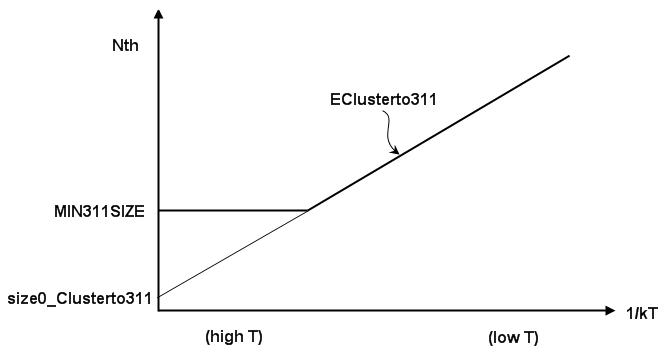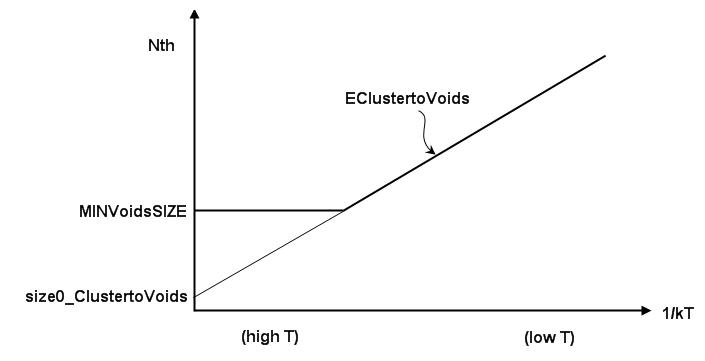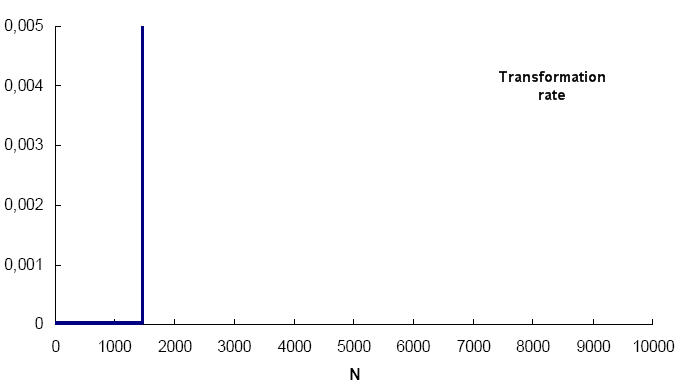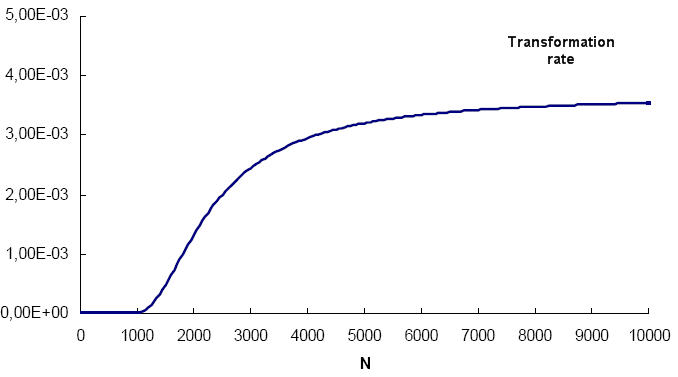DADOS implements a model which assumes that when the number of interstitials in an amorphous pocket is higher than a threshold, then the structure is automatically transformed into a I311.
The threshold in number of interstitials is given by:

Where:
However, there is a minimum size to create a I311, specified by parameter MIN311SIZE. Therefore, if the threshold is smaller than it, DADOS will discard it and use MIN311SIZE.

DADOS implements a model which assumes that when the number of vacancies in an amorphous pocket is higher than a threshold, then the structure is automatically transformed into a void.
The threshold in number of vacancies is given by:

Where:
However, there is a minimum size to create a Void, specified by parameter MINVoidSIZE. Therefore, if the threshold is smaller than it, DADOS will discard it and use MINVoidSIZE.

Two models are implemented in DADOS to simulate the creation of dislocation loops from I311 (Castrillo et al. 2005). It is highly recommended to have only one of them active.
To deactivate this model, please set size0_311toDLoop to negative.
This model assumes that when the number of particles is higher than a threshold, then the structure is automatically transformed into a dislocation loop.

The threshold in number of interstitials is given by:

Where:
To activate this model, please set R0_311ToDL to zero.
This model says that the transformation rate follows an Arrhenius plot from a value, as shown in the figure:

The barrier energy to create dislocation loops is dependent on the number of interstitials as follows:

Where:
The transformation rate is then given by:

Where: